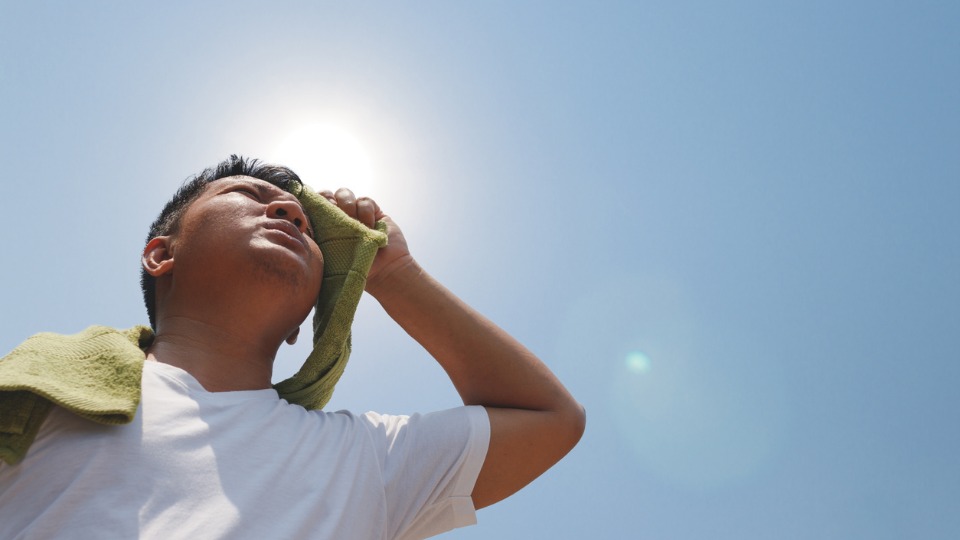
Hottest March ever: Why north-west India is reeling under a heatwave
An anti-cyclone over Rajasthan that usually occurs in April-May has set in earlier this year; global warming makes presence felt

North-west India continues to be in the grip of heatwaves this year. The region recorded its hottest March in 122 years – the hottest since 1901, when the process of keeping weather records began. The temperatures hovered in the mid-30s for most of the month, rising to touch almost 40 degrees Celsius in the last 10 days.
The Indian Meteorological Department (IMD) sees no respite from heat in the offing. Rajasthan and western parts of Uttar Pradesh will continue to witness heatwave conditions until April 9 and isolated pockets may well experience severe conditions, it said. Some parts of Punjab, Delhi-NCR and south Haryana are also expected to witness high temperatures for the rest of the week.
The situation was not much better in the rest of India. The Konkan belt, parts of Madhya Pradesh and Bihar also recorded heatwaves. Maharashtra recorded two spells of heatwaves in March. According to a report in the Indian Express, the state has recorded four deaths due to heat strokes in the last six days, the first being of a farmer from Jalgaon district on March 28. Another death was recorded the very next day in the district.
Effect of anti-cyclone
Mahesh Palawat, Vice-President, Meteorology and Climate Change at Skymet Weather, described such weather conditions in March as a “rare occurrence”. “March is primarily a transition month,” he told The Federal. “It is unusual for temperatures to touch 38 or 39 degrees Celsius at the beginning of March itself.”
The reason, he said, is the “early development of an anti-cyclone over Rajasthan which usually occurs in April and May”. “Because of the anti-cyclone, dry and hot winds from Baluchistan (Pakistan) region travel through parts of Gujarat and western Madhya Pradesh up to Mumbai, Thane and coastal Maharashtra, leading to an increase in temperatures,” he explained.
“Usually, during this period winds travel from the Arabian Sea, and these are warm and humid, but not hot,” he pointed out. The other reason, he said, was that March was unusually dry and saw no significant western disturbance that results in storms, thundershowers, and hailstorms over parts of central and north-west India. “It looks like the ongoing heatwave in the north-west and central India will continue till the first half of April,” he added.
By-product of global warming
“Year after year, the temperature and heatwave patterns are changing. The global temperature is on the rise and the number of heatwaves — as well as their intensity — is also increasing. This is a by-product of global warming,” Palawat said.
Watch: Global warming staring us in the face
Further expanding on heatwave conditions in Maharashtra, he said that these more severe than in other parts of the country. “Vidarbha, Akola, Chandrapur, Bhandara and Washim areas are recording very hot temperatures in excess of 42 degrees Celsius. This is India’s hottest belt since the tropic of cancer passes through the region,” he told The Federal.
Mumbai and adjoining areas will continue to see high temperatures for the next few days, he said. “There are chances that pre-monsoon activity may kick in after this and there may be occasional rain… so there might be some relief…”
Jayant Sarkar, IMD’s Mumbai head, said that heatwaves do occur in March in Maharashtra, especially in the Konkan area. “On March 28 last year, the maximum temperature recorded here was 40.9 degrees Celsius. On March 17, 2020, the maximum temperature recorded in Mumbai was 37.5 degrees Celsius and 40.3 degrees Celsius in March 2019. This year, the maximum temperature was very close to 40 degrees Celsius. There is nothing unusual about Mumbai and Konkan experiencing heatwaves during the month of March,” Sarkar said.
Also read: Pollen season is getting longer and more intense – here’s what allergy sufferers can expect
High temperature to continue
“The hot and dry air is incoming from north-west India,” Sarkar told The Federal. “The air from this area is hot and dry (from west Rajasthan), which is why Mumbai and the Konkan area experienced two heatwaves in March. However, for the next five days, no heatwave is forecast for Marathwada, Konkan, and Madhya Maharashtra,” he said, adding, “Maximum temperature in April though will be above normal in major parts of Maharashtra.”
“The climate change issues, in general, indicate that in future, we will get more frequent and more intense heatwaves. We will also experience different types of disastrous weather…their frequency and intensity will increase. This is not just confined to Maharashtra,” he said.
He also listed precautions that people could take during these hot spells. “The maximum temperature is recorded between 11.30 am and 4 pm. People should avoid going out during this time unless it is absolutely necessary. People should also drink more water and liquids, and should wear loose, light-coloured, cotton clothes to be more comfortable,” Sarkar said.

